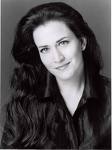|
Symphony
MYSTICAL PLANETS AND LIVELY GERSHWIN ORTIZ AT FINAL SRS CONCERT
by Peter Lert
Sunday, May 4, 2025
Symphony
VSO'S CONCERT MUSIC OF TIME, MUSIC OF PLACE
by Peter Lert
Sunday, April 27, 2025
Choral and Vocal
VOCAL ELEGANCE AND FIRE AT THE 222'S RECITAL APRIL 26
by Pamela Hicks Gailey
Saturday, April 26, 2025
CANTIAMO SONOMA SINGS AN INSPIRED GOOD FRIDAY MOZART REQUIEM CONCERT
by Pamela Hicks Gailey
Friday, April 18, 2025
DRAMATIC SHOSTAKOVICH SYMPHONY CLOSES PHILHARMONIC'S 25TH SEASON
by Terry McNeill
Sunday, April 13, 2025
LARGE COLLEGE OF MARIN AUDIENCE GREETS STOPHER ARTISTRY
by Terry McNeill
Saturday, April 5, 2025
Chamber
FRISSON DELIVERS SHIVERS OF DELIGHT
by Abby Wasserman
Sunday, March 30, 2025
OLD AND MOSTLY NEW IN SRS MARCH CONCERT IN WEILL
by Peter Lert
Saturday, March 22, 2025
Symphony
TWO FORMIDABLE SYMPHONIES AND PURPLE MOUNTAINS AT SRS CONCERT
by Peter Lert
Sunday, February 23, 2025
Chamber
THE PARKER CAPTURES DEMANDING ADES QUARTET AT RAC SEBASTOPOL CONCERT
by Peter Lert
Saturday, February 15, 2025
|
 |
 Soprano Christine Brandes |
MOZART, MAHLER BURNING BRIGHT
by Steve Osborn
Saturday, February 12, 2011
How many performances of the Jupiter Symphony does it take to turn on a light bulb above the head of attentive listeners? In the case of the Santa Rosa Symphony, only one. Despite a few minor flaws, their rendition of this beloved classic on Feb. 12 was incandescent, glowing with the warm light that Mozart sheds over Earth and other planets.
With his precise style and brisk tempos, Bruno Ferrandis is a natural Mozart conductor. Glancing only occasionally at a diminutive pocket score, he flew right into the opening Allegro vivace, bidding the strings to dig in and articulate the notes with precision and rapidity. He loomed over the orchestra like a hawk, spreading his arms to ride the waves of sound and then diving forward suddenly to summon each new entry. The call-and-response orchestration was clearly audible, with each phrase matching its counterpart.
The tension of the first movement gave way to the singing Andante of the second. Ferrandis lowered his shoulders considerably, and the orchestra responded with a more relaxed and open sound, marred only by a lack of dynamic contrast. The third movement, a minuet, brought even more changes, with unexpected ritards in certain measures, followed by strong downbeats. The violins offered some particularly agile bowing, mixing fluid down bows with spiky upstrokes.
The fourth movement was both the most impressive and the most problematic. Ferrandis and the orchestra did a great job of bringing out all the many disparate parts, but some of the entries were ragged and uncertain. The woodwinds in particular seemed to have trouble following Ferrandis’s beat, occasionally entering late and rushing their notes. The overall effect, however, was wonderful.
Wonderful also was the concert-opening overture to the Marriage of Figaro, rendered at an equally brisk pace with good ensemble playing from the strings. Unlike many orchestra programs, the overture was followed by an aria from the actual opera: “Porgi, amor,” sung by soprano Christine Brandes. She wasted no time in displaying her full, rounded voice, crescendoing effortlessly into high notes with a carefully controlled vibrato. She has a gorgeous sound perfectly suited to the aria, which is sung by the unhappy Countess at the beginning of the second act.
Brandes returned after intermission to sing the Seven Early Songs by Alban Berg. While not as well known as his Altenberg Lieder, the songs do show his remarkable feeling for drama and soaring melody. Their scoring, however, is a bit murky, probably because they were originally conceived for voice and piano and orchestrated much later to capitalize on Berg’s operatic fame.
While Brandes sang well, she undercut her own stage presence by using a score. This was a little mystifying, given her many operatic roles, but perhaps she didn’t have time to memorize the music. In any case, her German articulation was not as precise as her Italian in the Mozart aria, and her lower notes were often swallowed by the orchestra. Balance was a problem in the outer movements, which call for larger orchestra, but she hit her stride in the less orchestrated middle movements, particularly in the third song, “The Nightingale,” where she displayed great strength in her upper register.
In contrast to the Mozart, the Berg songs were all slow-moving, rarely rising above a strolling Andante. The pace slowed even more for the final work on the program, the Adagio from Mahler’s incomplete 10th symphony. Here the soaring vocal lines of the Berg were replaced by long figures from the strings, most notably the violas. They begin the movement all by themselves, playing an ambient melody that floats around a tonal center without ever settling down. The performance here was exquisite, with cohesive ensemble and not a single note or bow out of place.
After the violas’ memorable entry, the rest of the orchestra took turns pouring out Mahler’s viscous score. The forces are immense, but the work often has a chamber feeling, with only one or two lines unfolding. Mahler moves from one idea to the next, never settling into any definite direction. The entire movement seems to be composed of dying cadences, each one projecting an aura of finality, only to be replaced by another cadence that seems even more final.
Toward the end, the orchestra settled briefly into a triumphant waltz, followed by a series of memorable duets. When the movement finally did end, the sound moved upward from the cellos and bassoons to a shrill (and slightly out of tune) utterance from the piccolo. While not a quite a bang, it was a fitting conclusion for Mahler’s otherwise dark and brooding masterpiece.
All in all, the concert offered quite a contrast, from the vivacity of Mozart to the tortured melancholy of Mahler and Berg. Nonetheless, the light bulb burned brightly throughout.
[Reprinted with permission from San Francisco Classical Voice.]
|
